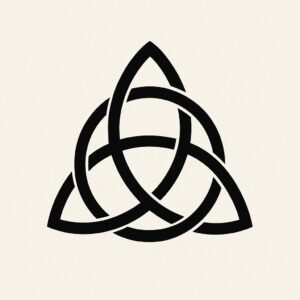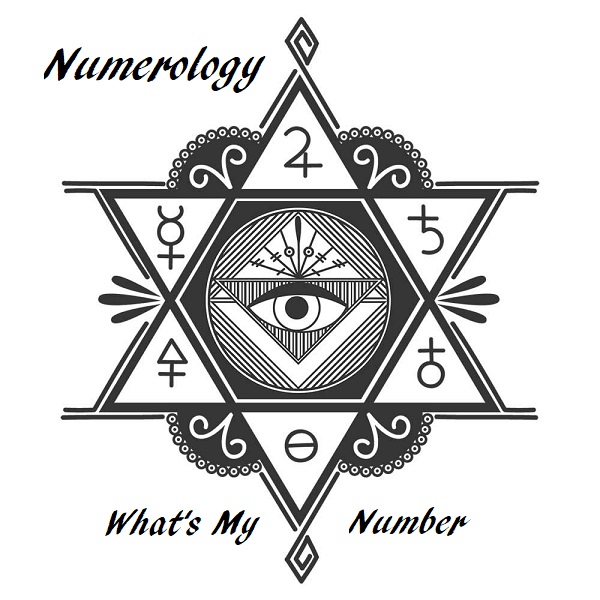Contents
- 1 The Triquetra Symbol: Meaning, History, and Modern Significance
- 1.1 Origins of the Triquetra Symbol
- 1.2 The Triquetra in Christianity
- 1.3 Spiritual and Esoteric Meanings
- 1.4 The Triquetra in Modern Culture
- 1.5 Symbolism in Jewellery and Fashion
- 1.6 The Triquetra in Tattoo Art
- 1.7 Why the Triquetra Endures
- 1.8 Conclusion of The Triquetra Symbol
- 1.9 Celtic Egyptian Wiccan and Pagan Symbols and Their Meaning
The Triquetra Symbol: Meaning, History, and Modern Significance

The Triquetra, also known as the Trinity Knot, is one of the most recognisable and enduring symbols in the world. Its simple yet elegant design of three interlocking loops has appeared across cultures, religions, and centuries — representing everything from life and death, to earth, sea, and sky, and even the Holy Trinity in Christian faith.
While the design may seem straightforward, the Triquetra’s meanings are anything but simple. This symbol carries centuries of spiritual depth and cultural fusion, making it as relevant today as it was over a thousand years ago.
Origins of the Triquetra Symbol
The Triquetra’s earliest known appearances date back to ancient Celtic and Norse cultures. Archaeologists have found it carved on Celtic stone crosses, rune stones, and early manuscripts such as the Book of Kells (circa 800 CE). The symbol’s presence in both pagan and Christian artefacts suggests that it was adopted and adapted by various belief systems over time.
In Celtic culture, the number three was sacred. It represented the triple goddess — Maiden, Mother, and Crone — symbolising the three stages of womanhood and the cyclical nature of life. The Triquetra’s three interlocking loops perfectly captured this divine triad, embodying balance, unity, and the eternal flow of existence.
In Norse mythology, the Triquetra was associated with Odin and was often found alongside the Valknut, another three-pointed design representing the afterlife and warrior’s fate. For Norse peoples, it may have symbolised the connection between earth, sea, and sky, or mind, body, and spirit.
The Triquetra in Christianity
When Christianity spread through Celtic regions, many pagan symbols were absorbed into Christian art and theology. The Triquetra, with its existing associations with eternity and unity, became a fitting representation of the Holy Trinity — the Father, Son, and Holy Spirit.
To early Christians, the continuous, unbroken lines of the Triquetra reflected God’s eternal nature and the inseparable bond between the three divine aspects. This adaptation allowed converts to retain familiar imagery while embracing new religious meanings.
Many medieval Christian manuscripts and churches feature the Triquetra intertwined with circles, symbolising infinity or the divine unity of all creation. Its use bridged the gap between pagan heritage and Christian faith — a testament to how symbols evolve to reflect changing beliefs.
Spiritual and Esoteric Meanings
Beyond its cultural and religious roots, the Triquetra carries deep spiritual symbolism. Its three interwoven arcs represent the interconnectedness of all things — a visual reminder that nothing exists in isolation.
Common interpretations include:
-
-
- Mind, Body, Spirit – harmony between physical, mental, and spiritual well-being
- Life, Death, Rebirth – the continuous cycle of existence
- Past, Present, Future – time’s endless flow
- Earth, Water, Air – elements of nature in balance
-
In modern spirituality, the Triquetra is often viewed as a symbol of protection, balance, and wholeness. Many people wear it as jewellery or tattoo it on their bodies to signify personal growth, spiritual awakening, or eternal love.
The Triquetra in Modern Culture
Today, the Triquetra remains a popular and versatile design seen in fashion, jewellery, art, and television. One of the most famous modern uses is in the TV series Charmed, where the Triquetra symbolised the Power of Three — the unity and strength shared by three sister witches.
Its clean geometric form makes it a favourite in tattoo art and Celtic-inspired jewellery. Silver or gold Triquetra pendants often incorporate circles, gemstones, or knots, blending ancient meaning with contemporary aesthetics.
The symbol has also gained popularity in New Age and Wiccan practices, representing feminine power, spiritual protection, and the interconnected energy of the universe. Its timeless form bridges ancient wisdom with modern self-expression.
Symbolism in Jewellery and Fashion
In jewellery, the Triquetra is more than an ornamental design — it’s a statement of belief, identity, and connection.
-
-
- Couples may exchange Triquetra rings to represent eternal love and the intertwining of two souls.
- Spiritual seekers wear it as a reminder of the balance between body, mind, and spirit.
- Fashion enthusiasts appreciate its elegant symmetry and ancient mystique.
-
When paired with gemstones, the Triquetra’s energy can take on additional meaning. For instance:
-
-
- Amethyst enhances spiritual clarity
- Emerald embodies renewal and harmony
- Moonstone symbolises intuition and divine feminine energy
-
Whether worn as a pendant, earrings, or bracelet, the Triquetra adds a layer of meaning that transcends style — blending beauty with purpose.
The Triquetra in Tattoo Art
Triquetra tattoos are a popular choice for those drawn to Celtic or spiritual symbolism. Because of its open-ended meanings, the design can reflect personal philosophy, faith, or transformation.
Some people choose to incorporate:
-
-
- Circles to represent eternity
- Lotus flowers or mandalas to connect with Eastern spirituality
- Runes or initials for personalised meaning
-
Its minimalist form suits both small, delicate tattoos and larger, more intricate designs. The Triquetra’s versatility ensures it resonates with anyone seeking to express unity, eternity, or interconnectedness.
Why the Triquetra Endures
The enduring appeal of the Triquetra lies in its universality. It crosses religious, cultural, and temporal boundaries while maintaining its essence — the beauty of oneness through three. Whether seen as a Celtic knot, a Christian emblem, or a spiritual sigil, it continues to inspire and connect people across the world.
The Triquetra reminds us that life’s greatest truths are often found in balance — the harmony of mind, body, and spirit; the union of past, present, and future; and the eternal flow between beginnings and endings.
Conclusion of The Triquetra Symbol
From ancient stone carvings to modern pendants, the Triquetra symbol has journeyed through time carrying its message of unity, eternity, and balance. Whether you view it as a representation of the Holy Trinity, a Celtic knot of protection, or a personal symbol of inner strength, the Triquetra endures as a timeless emblem of spiritual connection.
